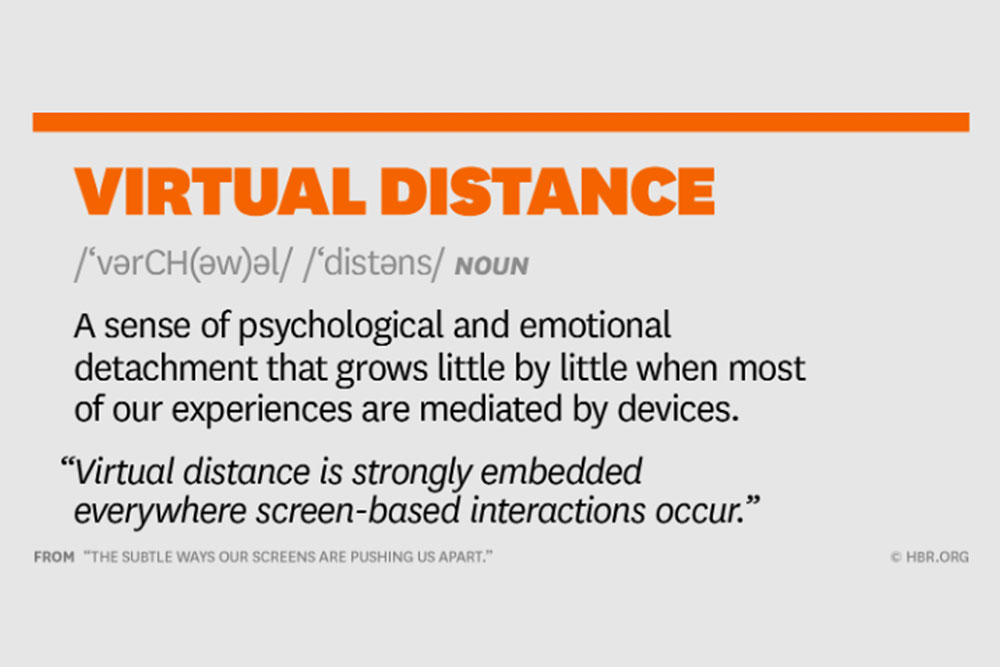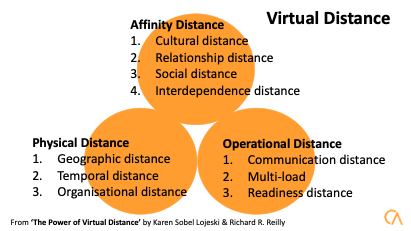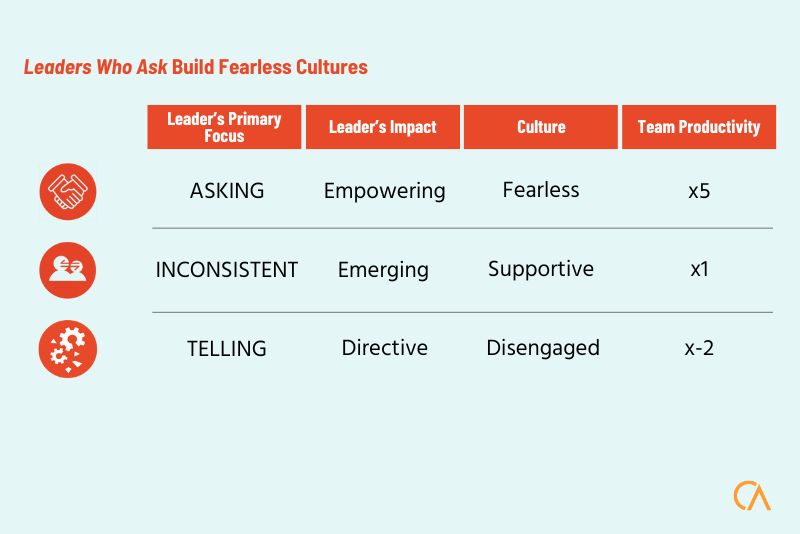
One of the biggest challenges currently facing leaders is effective leadership of virtual teams and virtual organisations. With people working from home and snap lockdowns being the current reality in Australian life, this is something I am often asked.
It’s easy to blame factors of physical distance for the friction and lack of cohesion experienced in teams. ‘It’s hard for us to work together because we aren’t all in the office right now’ is a common explanation. I have long believed this isn’t the cause of less-than-ideal team culture – remote working exacerbates what’s already there.
With a framework to assess what’s getting in the way provide a focus for our remedial energy, leadership would be easier, right?
In The Power of Virtual Distance: A Guide to Productivity and Happiness in the Age of Remote Work, authors Karen Sobel Lojeski and Richard R Reilly outline Virtual Distance, and I am excited to share it with you!
Virtual distance is ‘a measure of what’s lost when the human being is translated through the machine’. And given that we all use machines (email, phone, video conference) even when we are ‘in the office’, this impacts us all.
Virtual distance results from three basic factors:
- Physical distance – the challenges that are most obvious such as geography and time
- Operational distance – the ‘noise in the system’. These are the day-to-day things that prevent easily flowing communication.
- Affinity distance – ‘barriers that block formulation of deep meaningful relationships’

The research outlined in The Power of Virtual Distance shows that Physical Distance factors are the least important. Physical distance is half as critical as Operational distance, which is half as critical as Affinity distance.
As a ratio, the impact of each key factor on Virtual Distance is 1:2:4 Physical distance : Operational distance : Affinity distance.
In other words, as a leader your focus is best invested in factors that impact Affinity Distance. Here are three places you could get started, that typically form an important part of my Fearless Leadership programs:
- Provide the time and space for conversations that move from transactional to relational, and lead to understanding of shared values. Many people’s experience of ‘life on Teams’ is that it’s task-focused, and less time is available for human connection.
- Discuss and agree a shared team vision or purpose. There are surprisingly few leadership teams that have a clear purpose that all can articulate.
- Surface, explore and determine team ways of working. A team ‘rules of engagement’ helps everyone to understand what’s okay and what’s not okay here, and leads to a greater sense of safety.
What is the largest contributor to Virtual Distance in your team? What could you do today to begin to address that?
Go fearlessly!
Interested in learning more about Virtual Distance?
I am so inspired by the way Virtual Distance can help my clients, I have compiled a short PDF summary. Email me if you would like it.
Even better than that, read the book: The Power of Virtual Distance: A Guide to Productivity and Happiness in the Age of Remote Work, Karen Sobel Lojeski and Richard R Reilly, March 2020, John Wiley & Sons Inc (US)
Harvard Business Review article: https://hbr.org/2015/04/the-subtle-ways-our-screens-are-pushing-us-apart
’The Work’ Podcast: The concept of Virtual Distance was first introduced to me through the podcast ‘The Work’ by James Allen and Angelo Saridis. Thanks James and Ang!
STAY IN THE LOOP





